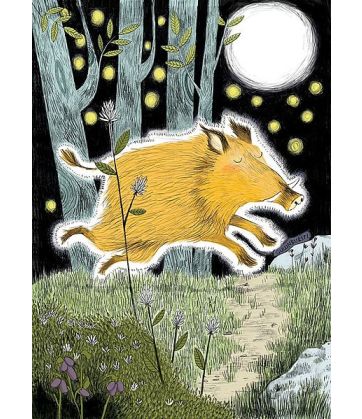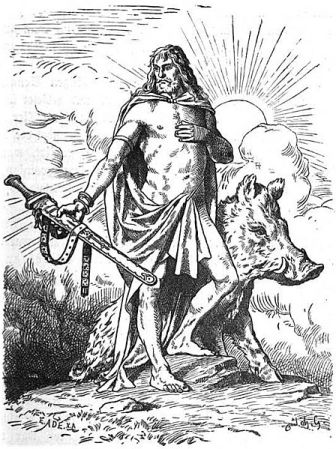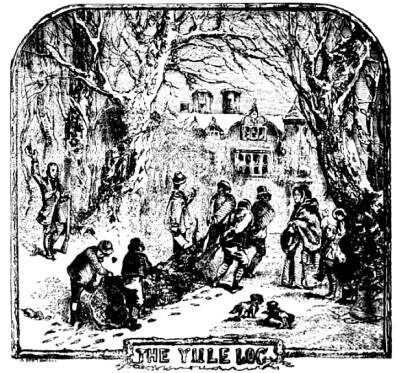Old Norse mythology is a treasure trove of captivating tales, filled with gods, giants, and magical creatures. One of the most remarkable beings that I’ll admit I always found slightly amusing is Freyr’s golden-maned boar Gullinbursti.
Gullinbursti is not just an ordinary boar; it is a divine creation with a fascinating backstory. Its importance extends far beyond its role as a companion to Freyr. In fact, Gullinbursti symbolizes various aspects of Norse culture, reflecting their views on life, death, and the world around them.
Etymology and Origin of Gullinbursti

The name “Gullinbursti” derives from Old Norse, and it is a compound of two words: “gullin,” meaning “golden,” and “bursti,” signifying “bristles” or “mane.” This combination perfectly describes the appearance of this mythical boar, which is said to possess a radiant golden mane that shines like the sun. The boar is also known as Slidrugtanni (Old Norse: Slíðrugtanni), another compound of two words: “Slidrug,” meaning “Dangerous,” and “tanni,” meaning “tooth.”
Gullinbursti is not alone among the animals of Norse mythology; it shares its realm with other boars and magical creatures. For example, the boar Sæhrímnir provides endless sustenance for the gods and Einherjar warriors in Valhalla. Gullinbursti’s creation, however, was brought about by one of Loki’s many mischievous antics.
The creation of Gullinbursti
Gullinbursti is a magical boar, brought to life by two dwarven master craftsmen, Sindri and Brokkr. The whole story is found in Snorri’s Skáldskaparmál, chapter 35. In this story, “The treasures of the gods”, Loki wagers his head with the dwarf Brokkr questioning his brother’s craftsmanship.
Then Loki wagered his head with the dwarf called Brokkr that Brokkr’s brother Sindri could not make three other precious things equal in virtue to these. Now when they came to the smithy, Sindri laid a pigskin in the hearth and asked Brokkr blow, and did not cease work until he took out of the hearth that which he had laid therein.
But when he went out of the smithy, while the other dwarf was blowing, straightway a fly settled upon his hand and stung: yet he blew on as before, until the smith took the work out of the hearth; and it was a boar, with mane and bristles of gold. Next, he laid gold in the hearth and asked Brokkr to blow and cease not from his blast until he should return.
Then later in the story, Brokkr presents the treasures his brother Sindri has created.
Then Brokkr brought forward his gifts: he gave to Odin the ring, saying that eight rings of the same weight would drop from it every ninth night; to Freyr he gave the boar, saying that it could run through air and water better than any horse, and it could never become so dark with night or gloom of the Murky Regions that there should not be sufficient light where be went, such was the glow from its mane and bristles.
Gullinbursti and the God Freyr

Freyr, the god of fertility and prosperity, is closely associated with Gullinbursti. As one of the Vanir gods, Freyr is a key figure in Norse mythology, and his bond with Gullinbursti is one of mutual admiration and loyalty. Together, they embark on adventures and share many experiences throughout the annals of Norse myth.
Gullinbursti serves as both a companion and a mount for Freyr, carrying him across land and sea with unmatched speed. The boar’s presence by Freyr’s side symbolizes the god’s connection to the natural world, as well as the power and vitality that the boar represents.
Their connection, and Gullinbursti also being known as Slidrugtanni is attested to in ch. seven of Skáldskaparmál from the Prose Edda.
Skáldskaparmál VII – On how to periphrase Freyr
Old Norse:
Svá segir Úlfr Uggason:
Ríðr á börg til borgar
böðfróðr sonar Óðins
Freyr ok folkum stýrir
fyrstr inum gulli byrsta.
Hann heitir ok Slíðrugtanni.
English translation:
“Thus speaks Úlfr Uggason:
The battle-bold Freyr rideth
First on the golden-bristled
Barrow-boar to the bale-fire
Of Baldr, and leads the people.
The boar is also called Dangerous-Tooth.”
Freya’s boar Hildisvini
Funny enough, Freyr’s sister Freyja also has a boar. It is named Hildisvini, meaning Battle-boar. It is only attested to in the lesser-known “Lay of Hyndla” found in the Icelandic Flateyjarbók. Freyja rides Hildisvini, who is actually a young hero named Ottar, disguised as the boar. Ottar is believed to be Freyja’s protégé, or possibly lover. Freyja does have a reputation so I think it’s fair to say that he wouldn’t play just one of those roles.
The Powers and Abilities of Gullinbursti
Gullinbursti is a creature of great power, endowed with remarkable abilities. He is said to possess unmatched speed and strength, making him an invaluable ally in battle or during any perilous journey. Its golden mane, which glows with an intensity that rivals the sun, serves as a source of light in even the darkest of places.
These abilities make Gullinbursti a formidable presence in the stories and events he shares with Freyr. Its role extends beyond mere transportation though, as a battle boar Gullinbursti would likely be great in any fight.
Gullinbursti in Rituals and Celebrations
Boars played a significant role in Norse rituals and celebrations, with Gullinbursti often at the forefront. In particular, boar sacrifices were made during Yule (celebrated around Christmas time, long before Christmas), a midwinter festival celebrated by the Norse people. Gullinbursti’s image was invoked during these feasts, symbolizing prosperity, fertility, and the power of the sun, which would return after the long, dark winter months.

Gullinbursti’s presence in Norse religious practices highlights its importance as a symbol of strength, abundance, and hope. The boar’s connection to these ceremonies also illustrates the deep reverence the Norse people held for the natural world and the divine creatures that inhabited it.
Sæhrímnir in Valhall
Another famous boar, although the exact species is up for debate, is the animal slaughtered and fed to the Einherjar in Valhall. According to Odin in Grimnismál stanza 18, the cook Andhrimner cooks and serves the Einherjar with flesh from Sæhrimnir. Then, much like Thor’s two goats Tanngrisnir and Tanngnjóstr, the animal is brought back to life the next day.
Grimnismál stanza 18
- In Eldhrimnir | Andhrimner cooks
Sæhrimnir’s sizzling flesh,
The best of food, | but few men will know
What the Einherjar feasts on.
Among scholars, there is some dispute whether the animal Sæhrimnir is a boar or possibly something from the sea instead. However, as this is supposed to be a feast for the Einherjar I personally really don’t think it’s fish. While Vikings did eat fish, I am personally convinced that if given a choice they would much rather eat a freshly cooked boar.
Last thoughts on Freyr’s Boar
Gullinbursti’s role and significance in Old Norse mythology are unmistakable. As a symbol of strength, courage, and fertility, it has left a lasting mark on the ancient stories and beliefs. Gullinbursti’s lasting legacy and influence on contemporary interpretations of Norse myths remind us that these tales hold a timeless appeal, enchanting us with their magic, mystery, and wonder.
After having toiled and worked with this post for a while I’ve worked up quite the appetite and think eggs and some sizzling bacon sounds good.
FAQs
Gullinbursti is a compound of two Old Norse words: “gullin,” meaning “golden,” and “bursti,” signifying “bristles” or “mane.” The name describes the boar’s most notable feature, its radiant golden mane.
Gullinbursti was created by the dwarves Brokkr and Sindri during a challenge posed by Loki, who wagered that they couldn’t forge three treasures superior to those made by the Sons of Ivaldi, another group of skilled dwarves.
Gullinbursti possesses exceptional speed and strength, able to travel across both land, water and in the air. It is a formidable ally in battles and adventures. Its golden mane can illuminate even the darkest places and outshine the sun.
Freyr, the god of fertility and prosperity, is closely associated with Gullinbursti, who serves as both his companion and mount. The boar’s presence symbolizes Freyr’s connection to the natural world and the power of fertility.
Gullinbursti is connected to the midwinter festival Yule, where boar sacrifices were made to symbolize prosperity, fertility, and the returning power of the sun after the long, dark winter months.
Featured Image Credit: Ludwig Pietsch (1824-1911), Public domain, via Wikimedia Commons
